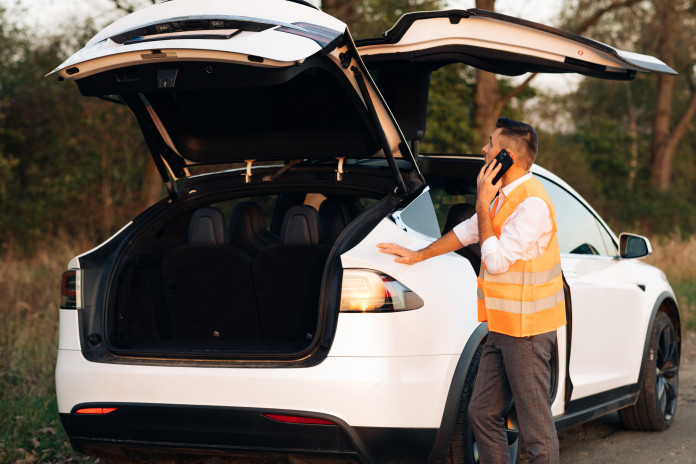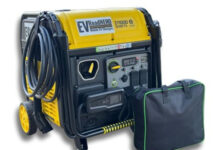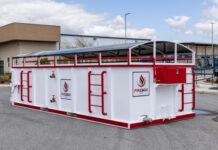
By: Chris Young
According to InsideEV’s, Q1 2022 new registrations of EV’s was up 60% to just over 158,000 units. Coming as no surprise, Tesla led that charge with 113,882 units alone. Kia, Ford, and Hyundai rounded out the top four all with considerable YOY gains in units delivered. This is a new record of 4.6% market share for Electrics all while new car sales were down 18%, 3.4 million units, due to ongoing supply chain complications
If you ask a tower what EV’s they’ve towed, the overwhelming majority of the responses will be “Tesla”. It’s been 10 years since the first Tesla Model S hit the street and the company has done an exceptional job working with Towing and Roadside to ensure serviceability and deliver positive customer experiences for their owners despite unfortunate breakdown events. They’ve accomplished this with an in-house Roadside Team who manages each roadside event from beginning to end and providing readily accessible Towing and Roadside resources for their service providers. This level of service provider support is one of many reasons Tow Companies want to work with Tesla. Domestically, Tesla has supported nearly 1.4 million vehicles, based on sales through Q1 2022.
While Tesla’s roadside model is an anomaly in the space it’s a small fraction of total annual dispatched events originating from OEM’s. The balance of disabled EV dispatches coming from all other OEM’s, through their Roadside Networks, might appear insignificant if not for the units handled through insurance carriers and cash calls on aging units, now out of warranty. Traditional Roadside Networks; AAA, Allstate, Agero, Honk, NSD Urgently, etc all have the bandwidth and service provider portfolios to take on a surge in dispatch volume.
The struggle will come in the name of product awareness as numerous new to market EV platforms launch with no Towing & Roadside guidance for the operator on the street tasked with handling a vehicle they’ve never experienced, possibly never seen. This means some pivots in thinking, handling, and equipment, very minor changes for some, wholesale changes for others. So what’s the winning formula with EV’s?
When receiving a dispatch on an EV you or your company has no previous experience with, request the towing and roadside resources for the vehicle if they’ve not been attached to the dispatch. Networks providing services to OEM clients should have these documents. Too many times operators go straight to social media looking for information. I browse these groups/pages regularly and there is no shortage of misleading, or outright incorrect information. It’s honestly more bad information than good. If all else fails, get into the Owner’s Guide for the vehicle. EV’s have extremely comprehensive guides; it may take some hunting and time to determine several steps required to get through the job, but it’s a source when you have none. Ideally you want curated resources here on the front-end minimizing exposure on busy roadways while simultaneously delivering positive customer experiences.
Handle the vehicle only as recommended by the OEM. Be it connection points for loading to jump starts, don’t make the assumption all EV’s are handled the same way. What’s permissible on one platform may very well be off limits on another so it’s of paramount importance operators know precisely how to handle the vehicle platform they been dispatched and not make any assumptions.
• Loading – No metal gear on any suspension
components Rivian R1T, R1S, EDV – connection point for loading to a carrier is front lower controls arms and ONLY with a wrap around nylon bridle
Ford F-150 Lightning – transport slots in bottom of frame rail behind front sway bar mounts with nylon bridle
Hummer EV – front or rear tow hooks
Audi e-Tron, VW ID.4, Porsche Taycan – Tow
Eyelet
• 12 Volt Jump Starts
VW ID.4 – Positive on the battery, negative on the ground lug
Audi e-Tron – no field jumps, bring to dealer and they will charge 12 Volt; this one can be deceiving as there are jump posts available
Ford Mach E – Remote jump leads in front bumper to access, then remote jump posts
Rivian R1T, R1S – As of right now, no access to battery, subject to change with some
validation
On tire change events, jack the vehicle only in the defined locations prescribed by the manufacturer. Long gone are the days of stabbing vehicles with floor jacks on the rocker panels, axles or suspension. Ford F-150 Lightning now has an independent rear suspension with aluminum control arms, jacking locations on the frame rails are clearly defined at each corner with an arrow stamped through the frame. Rivian R1T/R1S has an extremely technical front and rear suspension, factory jack adapter inserts into jacking points in belly of vehicle, raise suspension to full height, activate “Tire Change Mode”. The spare tire is an option on the Rivian, a flat here can turn into tow really quick. Audi e-Tron has jacking points on the frame rails defined by an arrow on the rocker, collapsible spare tire/compressor, and “Wheel Change Mode”. Negligently jacking EV’s can lead to considerable damage, misplacement of a jack on the vehicle’s propulsion battery could lead to an expensive battery replacement claim.
The love affair with the mechanical park override has finally come to an end; they’re gone in the EV’s. Park in some models is nothing more than an application of the Electronic Parking Brake, the nemesis of all operators, or a park pawl in the electric motor. On the models with a park pawl you not only need to get the vehicle into “neutral” but also disengage the EPB. It’s time to brush up on skills with skates.
Every EV loaded to a carrier goes down on an 8 point kit; it’s not up for debate. I wrote training material on a new launch pickup truck last year, and if I said I was surprised to see one of the first vehicles towed on a carrier run down on the winch and large J-Chains, by the suspension, I’d be lying. The batteries in many of these platforms are an integral part of the vehicle. Stretching them out on both ends with the winch is a recipe for disaster, and to reiterate, could lead to an expensive battery replacement claim.
EV’s are heavy. Most of the models I’ve put on scales recently end up weighing about 10% MORE than what’s stated in its specifications, a few come in at spec. The greatest concern is with the large sedans, pickup trucks, and package vehicles. But don’t be fooled by the smaller platforms, VW ID.4 & Mach E are both short of 5000 lbs, Audi e-Tron is almost 6000 lbs. Rivian R1T starts around 7200 lbs, Ford F-150 Lightning is just under 7000 lbs, Hummer EV is reported to be in the neighborhood of 9000 lbs. Companies with fleets running Ram 5500 & Ford F-550/600 carriers will need to look really hard at what their trucks weigh fully rigged with fuel tanks topped off. Pay close mind to what’s available on the rear axle as that’s about all you have to work with on 120” CA, steel deck carriers with wheel lifts. Since most EV’s maintain a 50/50 weight distribution you no longer have that front heavy bias of traditional ICE (Internal Combustion Engine) vehicles to roll some weight into the front axle of the tow truck. Almost, if not all of it goes on the rear axle.
The Towing Community is well equipped to support this increasing numbers of EV’s but as with every automotive evolution to date, Towing and Roadside will need to evolve as well. Towers are expected to have the solution to every problem. OEM’s anticipate this from the towing community; it’s why we’ve seen the removal of mechanical park releases from German platforms for the last 10 years with no replies to the demands for bringing them back. What operators face with EV’s is far more technical and the time has come to lean in hard on education and training. This is also a time for the towing community to find its voice and actively request resources from roadside partners dispatching roadside events for OEM’s. What’s starting here with passenger vehicles and light trucks will find its way into Commercial Trucking sooner than later. Embracing it now is going to be a whole lot easier than playing educational catch up down the road while simultaneously chasing your competition who got in front of the curve.







